John Hurrell – 8 November, 2012
There is something detached and removed about Harrison's organising of texture. The hair is chunkier and drier (or chalkier) in its patina - coarser than the rest of each body which is smoother and silkier and also covered with comblike claw marks - parallel striations that are the result of Harrison's use of a rasp. This sort of hatching over each body's skin surface you have to look quite closely to see.
In the main art of the Fox Jensen gallery we see seven vertical sculptures of naked women - carved, not cast - with solid bulky plaster manipulated round steel armatures. The plaster has been shaped and subtracted to make these matter-of-fact, unglamorous bodily portraits, and then lightly coated with wax to remove any sheen.
The highly individual results are positioned at regular intervals as if on a grid, aligned so they are facing at right-angles to each other (not diagonally turning) and presented under a grey and cold natural light.
All women, all standing, all with their arms hanging at their sides - it’s a bit monotonous and too predictable. This despite the salient variations in body shape, age and facial character, and some subtle curves in their vertical posture. It would have better to have more drastically varied poses (perhaps some crouched, reclining or squatting) and arranged in clusters.
Maybe with the formal layout Harrison wants to present them as a variety of abstraction and not as realism. For example there is something detached and removed about his organising of texture. The hair is chunkier and drier (or chalkier) in its patina - coarser than the rest of each body which is smoother and silkier and also covered with comblike claw marks - parallel striations that are the result of Harrison’s use of a rasp. This sort of hatching over each body’s skin surface you have to look quite intensely to see. It is vaguely reminiscent of Jasper John’s encaustic paintings, and very expressive close up.
Interesting these rasp marks may be on these statues, but Harrison’s four woodcuts, with their heavy use of knot-holes and woodgrain, that ‘float’ around his images of light raking across male backs, are even more intriguing. They can be seen in the office, and in these prints, with their superbly resolved, shimmering stacks of fastidiously modulated lines, Harrison focuses on the muscles, tendons and fat of the human back, buttocks, arms and legs. As with the striations on the plaster you have to stand close to analyse the precision of these horizontal cuts and deliberately left woody textures.
I, frankly, am wild about the woodcuts and cool about the sculpture which I find overall too rigid and solid when compared to the fluidity of Harrison’s printed marks. Like say, a painter like Richard McWhannell, Harrison is a fantastic observer and recorder of fellow humans, and clearly a brilliant drawer, but his sculpture lacks the lightness and diffuseness that makes his two dimensional images so compelling.
John Hurrell
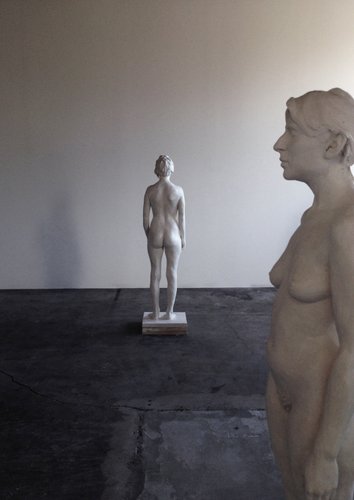
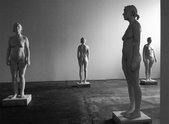

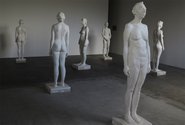

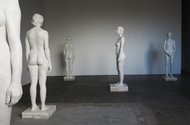
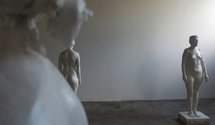

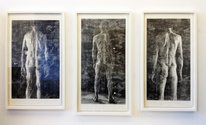
 Two Rooms presents a program of residencies and projects
Two Rooms presents a program of residencies and projects Advertising in this column
Advertising in this column



This Discussion has 0 comments.
Comment
Participate
Register to Participate.
Sign in
Sign in to an existing account.